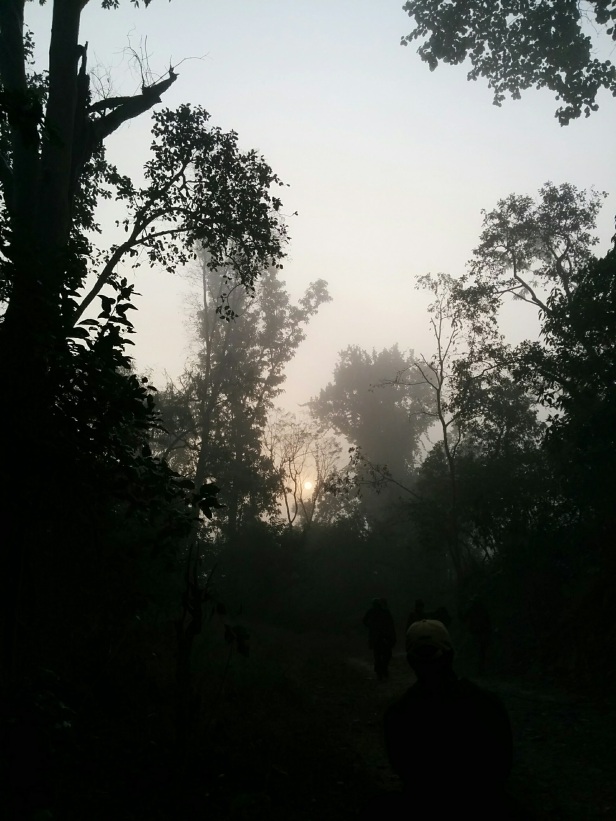I woke up with a start, my heart pounding. Yet, curiously alert. As if my subconscious had registered, was prepared for something, even before my conscious mind had recognized it. A primeval response coded into the DNA? The deep rumbles and shrill trumpets cut through the night again. It was December, bitterly cold and pitch dark. I was somewhere inside Corbett’s jungles, with a few others, in a charming old colonial rest house. One which the great F W Champion had frequented. Some of us were huddled under blankets or in sleeping bags inside; others were braving the cold in tents outside. Someone asked: Did anyone hear that? Hushed whispers followed. How many were there? How close? Hope the fence holds. Soon the ears got accustomed to the roars and rumbles, and sleep closed in. And somehow, by then, fear had turned into exhilaration as the last thought on my mind was: beyond the thin walls and fence was a herd of wild elephants – the closest I had ever been – making sounds I hadn’t heard or knew existed. Thoughts that perhaps crossed Champion’s mind too.

I was on a 10 day course on wildlife conservation conducted for interested lay people by the Wildlife Institute of India (WII) – a renowned centre in Dehra Dun for research and training in conservation. We were nearing the end of the course when we woke the next morning. There were 13 students including myself – of different persuasions but united by a love for wildlife. We were led by Dr. R Suresh Kumar – the course is his brainchild – and Lakshminarayana. The former, expert faculty and scientist at WII, is a story-teller par excellence; the latter, a research scientist at WII, is an encyclopedia on elephants. We were accompanied by Imamji – a big, charismatic man with a booming voice and a tendency to be mischievous – as our guide.
In the past three days, we had trekked deep into the jungles, climbed steep hills with old and new growth forests, struggled across streams, narrowly avoided quicksand, encountered various birds and animals and fallen into an exhausted and satisfied heap every night. We had had a near run in with a tiger: its deep, electrifying roar, reverberating through the valley – my first – had Sāmbhar deer and me running for cover. It turned out to be a near run in with Imamji as well – he had gleefully joined the roaring tiger, and probably had the animal running for cover too! We had anxiously stared at the prospect of hunger as our pack mules and provisions didn’t arrive one evening until well past dusk. Apparently, one of the mules had been rather stubborn. And that morning, we set out eagerly towards our next adventure – a visit to a tiny Gujjar hamlet, to understand the challenges of living inside degraded ecosystems, neglected by the administration, forgotten by the world.
Split into two components of five days each, the first, the theory if you will, precedes the field exercise above, and is conducted on the WII campus. Arguably one of the course’s major draws, its gorgeous green precincts with nature walks and birding spots provide the refueling needed between intense sessions. Lectures and presentations, sprinkled with humour and trivia, introduce India’s staggering natural wealth, its evolutionary history, and provide insights into the challenges, science and work of conservation that would not otherwise be available. There are outdoor sessions too: a brief pilgrimage to George Everest’s home in Mussorie, the imposing Forest Research Institute and several museums in Dun. The sessions are delivered from multiple perspectives: by experienced academicians, research scientists and field officers in various capacities. On popular demand, informal sessions began where formal sessions ended, over walks and dinners.
The field exercise complements these sessions. Apart from the sheer privilege of walking these forests, and observing the intersection of man and nature in its many forms and complexities, one also now and then glimpses nature in its unsullied form: from strange, geological formations to shifting sand banks as streams forge new paths.

Towards the end, formerly polite discussions turn into raucous affairs – with the normally soft-spoken Dr. Suresh and Lakshmi jumping right in – and friends are made, bonds are forged.
The course is an enriching experience. The passion and commitment of many individuals at WII that stands in stark contrast to your general notion of government apathy is inspiring. The course is a relevant and necessary education to develop one’s worldview in times where man and nature seem to be increasingly at odds.






Thanks for sharing your experience, hope more get opportunity to be part of this journey that you have created here.
LikeLike